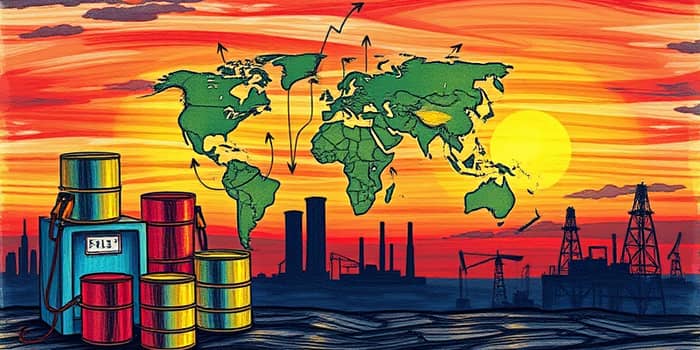
The recent climb in oil prices has sent ripples through everyday wallets and corporate balance sheets alike. From gas stations to factories, the impact is felt across all corners of the global economy.
Several converging factors have fueled the recent spike. In the heart of the issue lies geopolitical tensions in oil-rich regions. Rising hostilities around the Strait of Hormuz and renewed concerns over Israel-Iran relations have significantly elevated the risk of supply disruptions. When a strategic chokepoint is threatened, markets react instantly.
Compounding these fears, supply disruptions and cost pressures on consumers and industries have intensified. Reduced gas flows from Iran to Iraq have curtailed power generation there, pushing up local demand and global anxiety as summer peaks approach.
Meanwhile, U.S. domestic indicators signal strain. The Dallas Fed’s Energy Survey reported a contraction in oilfield activity and mounting cost premiums for drilling and extraction. This pessimistic outlook among producers contributes to a tighter supply outlook in the months ahead.
Over the past few weeks, prices have hovered near $70 per barrel, recovering from a slight dip to $66.35 on July 4. Despite a 4.7% gain in the last month, they remain about 20% below the peaks seen earlier in the year.
At the gas pump, drivers have felt the pinch. A few cents per gallon may seem trivial, but the cumulative effect on weekly budgets can be dramatic, especially for commuters in distant suburbs or rural areas.
Higher energy bills ripple into every household. Heating, cooling, and electricity costs rise, leaving less disposable income for dining out, entertainment, or savings. This dynamic often leads to higher gasoline and energy costs being a regressive strain on lower-income families.
Businesses reliant on transportation—trucking firms, delivery services, airlines—face elevated operational costs. These hikes often pass through in the form of surcharges or higher ticket prices. For manufacturing plants, petroleum fuels serve as both an energy source and a raw material for plastics, chemicals, and synthetic fabrics.
Online retailers and eCommerce platforms feel the squeeze in shipping and logistics, forcing them to adjust fulfillment strategies or accept narrower margins. Meanwhile, commodity-intensive sectors like agriculture and fishing see input costs climb, potentially leading to higher food prices.
On a broader scale, persistently elevated oil prices exert upward pressure on inflation, eroding purchasing power. Central banks may respond with tighter monetary policies, raising interest rates and potentially slowing economic growth further.
Oil-importing nations carry the heaviest burden. Countries that rely on foreign crude see their import bills balloon, straining current account balances and weakening their currencies. India, which imports over 85% of its crude needs, faces a particularly steep climb.
Beyond immediate market mechanics, the specter of conflict in the Middle East looms large. A blockade of the Strait of Hormuz or escalation between Israel and Iran would instantly tighten global supply.
In response, the U.S. has bolstered strategic reserves and expanded domestic output, but these measures may only partially offset major disruptions. OPEC+ remains a critical voice—past decisions to cut or restore production have had outsized effects on market sentiment.
Amid volatility, many energy firms are shifting capital toward renewables and carbon-capture technologies. This diversification strategy helps hedge against long-term demand shifts as nations pursue decarbonization goals.
The industry’s financial discipline—maintaining strong dividends and buybacks—has bolstered investor confidence even when prices swing wildly. This resilience underpins steady funding for transition projects.
investments in low-carbon technologies are accelerating, with green hydrogen, battery storage, and wind and solar farms receiving record funding. As these alternatives mature, they will gradually relieve the economy’s dependence on crude oil.
While market forces are largely beyond individual control, there are steps to soften the blow:
At the policy level, advocating for diversified energy portfolios and improved public transit can yield long-term benefits. Governments can accelerate incentives for clean energy, helping to temper future volatility.
The recent climb in oil prices highlights the delicate balance between global supply, geopolitical stability, and consumer welfare. While industry participants adapt through hedging and efficiency measures, households feel the immediate strain at the pump and in monthly bills.
In the short term, prudent budgeting and efficiency upgrades offer relief. Over the long haul, advancing renewable energy and supporting a diversified energy mix will be key to shifting economic growth and inflation pressures away from fossil fuel volatility.
By understanding these dynamics and taking proactive measures, both consumers and industries can navigate this challenging environment more effectively, emerging stronger and more resilient as energy markets evolve.
References













